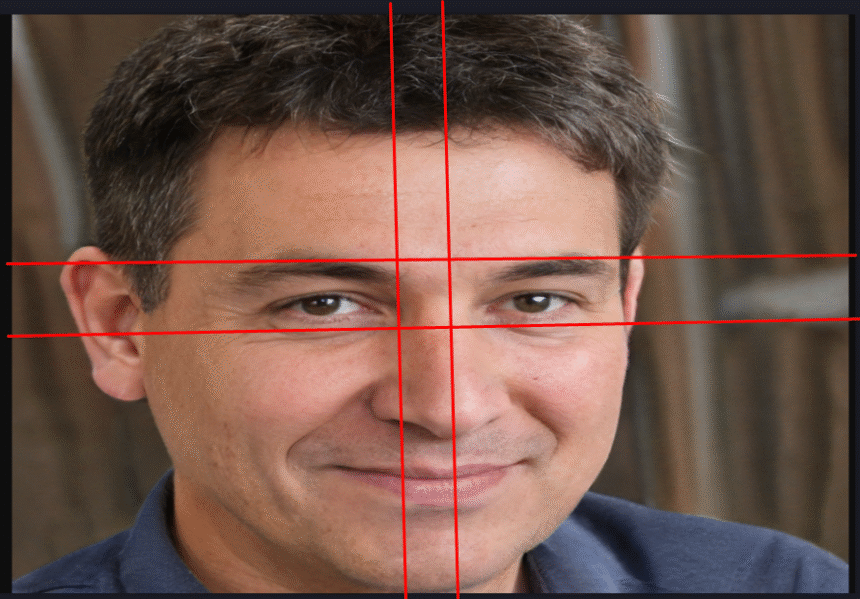The phrase “this person does not exist” has taken the internet by storm, referring to an AI-powered website that generates hyper-realistic human faces of people who do not exist. These faces look incredibly convincing, yet they are the result of complex algorithms and deep learning models. This technology has sparked both curiosity and concern, as it challenges our perception of authenticity and identity in the digital age.
The website, thispersondoesnotexist.com, uses GANs (Generative Adversarial Networks) to create these images, making it a fascinating example of AI in action. But why does this matter, and what are the implications of a world where digital representations of humans are increasingly indistinguishable from real people? In this article, we’ll delve into the technology behind “this person does not exist,” explore its uses, and discuss both the exciting and concerning potential applications of AI-generated faces.
The Technology Behind “This Person Does Not Exist”
The “This Person Does Not Exist” website utilizes a powerful AI technology called Generative Adversarial Networks (GANs) to generate realistic, lifelike faces. GANs consist of two primary components: the generator and the discriminator. The generator creates synthetic images of human faces, while the discriminator evaluates these images to determine whether they appear real or fake. Over time, as the generator and discriminator collaborate, the system improves, yielding more convincing and realistic images.
GANs have revolutionized AI-generated content by enabling the creation of high-quality visuals, including human faces, that are virtually indistinguishable from real photos. The underlying machine learning techniques behind GANs involve training on massive datasets of real human faces, allowing the AI to learn the intricate details that make faces look natural, such as skin tone, lighting, and facial features.
As these models continue to evolve, they push the boundaries of what’s possible in AI-generated media. The result is a powerful technology that produces photorealistic faces, which can be utilized in various industries, including entertainment, marketing, and beyond.
Applications of AI-Generated Faces
While “This Person Does Not Exist” may appear to be a fun website, AI-generated faces are having a significant impact across various industries. These realistic, computer-generated faces are being used in numerous ways that are transforming how businesses and creatives approach digital media.
Entertainment and Media
AI-generated faces are increasingly used to create digital characters in movies, video games, and advertising. This technology allows creators to design realistic virtual personalities without the need for actual actors, saving both time and resources. These faces can be used to bring characters in animated films, virtual reality experiences, and interactive media to life.
Marketing and Personalization
Companies are leveraging AI-generated faces in personalized marketing campaigns. By using virtual faces tailored to customer preferences, businesses can create more engaging and relatable ads. While this can boost consumer engagement, it also raises concerns about privacy and authenticity in advertising.
Deepfake Technology
AI-generated faces play a key role in deepfake technology, which can create realistic but fake videos or images. While deepfakes have entertainment and artistic potential, they also raise ethical concerns, including the dissemination of misinformation, issues related to consent, and privacy violations. These challenges underscore the importance of responsible use of AI-generated content.
Ethical Considerations of AI-Generated Faces
As AI-generated faces become more realistic, several ethical concerns have surfaced. The growing use of these faces raises questions about their impact on privacy, trust, and identity. Here are some key ethical issues to consider:
- Fake Identities: AI-generated faces can be easily used to create fake identities, potentially deceiving or manipulating individuals. This can have profound implications for online interactions, identity theft, and even fraud.
- Privacy Violations: Using AI-generated faces may infringe on people’s privacy by creating likenesses that could be misused without consent. These faces could be linked to false narratives or used in contexts where individuals’ rights are violated.
- Authenticity and Trust: The rise of AI-generated faces challenges society’s ability to differentiate between what is real and what is created. This can undermine trust in media, social media, and other digital platforms, where authenticity is highly valued.
These issues are reshaping our understanding of identity and authenticity in the digital age, making it essential to use AI-generated faces responsibly.
Future Implications of AI-Generated Faces
As AI-generated faces continue to evolve with advancements in machine learning and deep learning, their role in digital spaces is set to grow. In this section, we’ll explore the potential future impact of AI-generated faces in various industries.
- The Impact on Social Media: AI-generated faces may significantly affect social media platforms, where authenticity is vital. With increasingly realistic digital personas, users may struggle to distinguish between real individuals and AI-created ones, raising concerns about trust and transparency in online interactions.
- Virtual Reality and Augmented Reality: AI-generated faces will play a pivotal role in shaping the future of Virtual Reality (VR) and Augmented Reality (AR). These faces can be used to create highly realistic avatars for users, thereby enhancing immersion in VR environments and enabling more personalized AR experiences.
- Ethical Challenges: The growing realism of AI-generated faces will pose significant ethical challenges. Society will need to navigate issues surrounding identity manipulation, consent, and privacy as these virtual representations become increasingly indistinguishable from real people.
The Role of AI-Generated Faces in Society and Culture
As AI-generated faces become more integrated into our daily lives, their influence on society and culture will continue to expand. These virtual faces have the potential to reshape social interactions, online relationships, and even perceptions of beauty and identity. In this section, we’ll explore how AI-generated faces can drive cultural shifts and impact human interaction.
One of the most significant cultural impacts of AI-generated faces is their potential to influence beauty standards and representation. With the ability to create hyper-realistic faces, AI-generated faces could lead to new ideals of beauty, challenging traditional concepts of attractiveness and diversity in media and advertising.
Additionally, AI-generated faces have the potential to alter human interaction, particularly in the realm of digital avatars. As these virtual faces become increasingly lifelike, they could potentially replace real human interactions in certain contexts, such as social media and virtual reality, raising questions about authenticity and emotional connection in online environments.
Final Thoughts
In conclusion, “This Person Does Not Exist” has highlighted the growing impact of AI-generated faces, offering a glimpse into a future where digital identities could be as common as real ones. While the technology presents exciting possibilities, it also brings significant ethical, social, and legal challenges. Issues such as privacy, consent, and the potential for misuse must be carefully managed as AI-generated faces become more prevalent. Moving forward, it will be essential to navigate these challenges while harnessing the benefits of AI-generated content. By doing so, we can ensure that AI technology is used responsibly and effectively in our increasingly digital world.
FAQ’s
What is the purpose of the website “This Person Does Not Exist”?
The website generates realistic, AI-created faces of people who don’t exist. It demonstrates the power of generative adversarial networks (GANs) in creating lifelike images.
How does “This Person Does Not Exist” create realistic faces?
It utilizes GANs, which comprise two networks: a generator that generates images and a discriminator that evaluates them. This process enables the model to improve and produce increasingly realistic faces.
Can AI-generated faces be used for unethical purposes?
Yes, AI-generated faces can be used in deepfakes, identity theft, and the dissemination of misinformation. It’s essential to be aware of the potential ethical concerns and use this technology responsibly.
Are AI-generated faces becoming more realistic?
Yes, with advancements in machine learning and GANs, AI-generated faces are becoming nearly indistinguishable from real human faces, leading to both exciting possibilities and ethical challenges.
What is the future of AI-generated faces?
The future may see AI-generated faces playing a larger role in digital avatars, virtual reality, and even personalized marketing. However, society will need to address the ethical implications of this technology as it advances.




